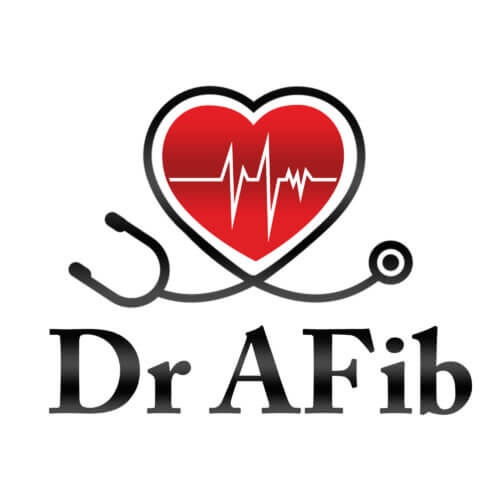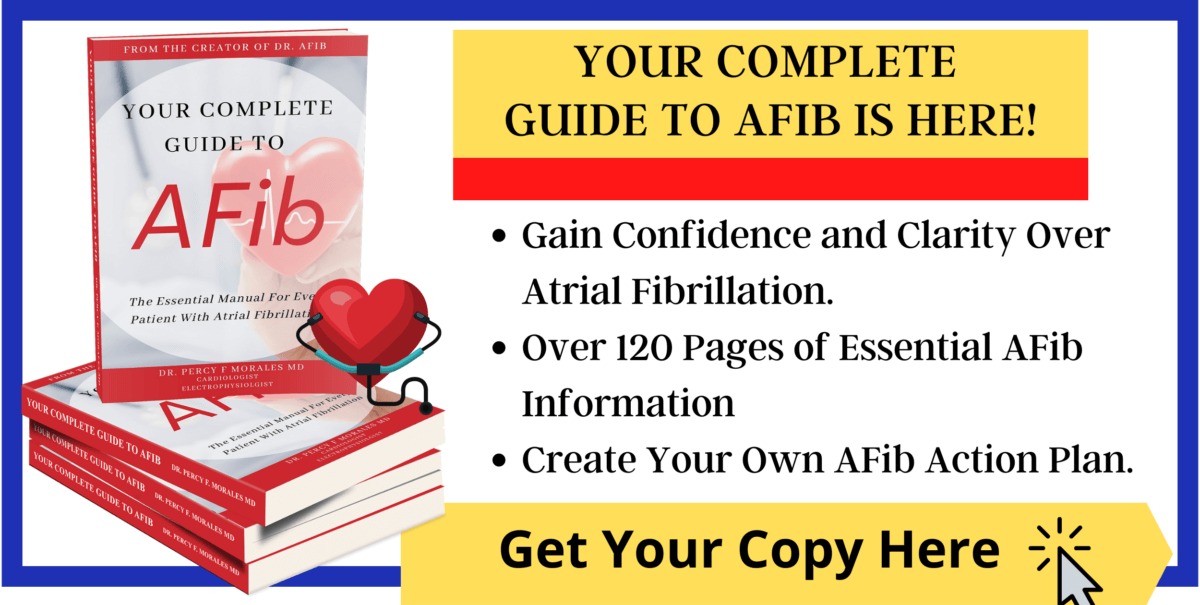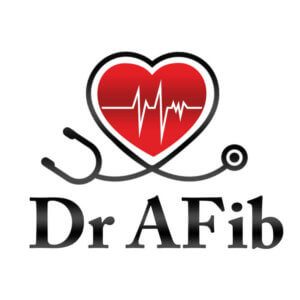Read more about the use of Flecainide of atrial fibrillation. Treating atrial fibrillation often involves the use of several different types of medications.
These can include antiarrhythmic drugs that regulate heart rhythm, beta-blockers that affect the rate of your heartbeat, or anticoagulants to reduce the risk of blood clots.
It can be difficult to keep track of which does what sometimes, especially if you’ve just been diagnosed.
In this article, we’re doing a deep dive to help you better understand one of the most common anti-arrhythmic drugs prescribed called Flecainide.
What is Flecainide?
Flecainide is manufactured by 3M Pharmaceuticals. It was first approved for use in the United Staes in 1985. It went off-patent in 2004 and can now be sold as a generic. As of 2017, there had been more than one million prescriptions written for Flecainide in the US.
Flecainide is sold under the trade names Tambocor, Almarytm, Apocard, Ecrinal, Flécaine and as a generic.
Flecainide is a class IC antiarrhythmic drug. It has become one of the top choices for anti-arrhythmic medications to help restore and maintain sinus rhythm for patients with atrial fibrillation or supraventricular tachycardia.
Flecainide comes as a pill that is usually taken twice a day. You can take it with or without food. The typical starting dose is 50 mg twice a day, with a maximum dose of 150 mg twice a day.
How Does Flecainide Work?
Flecainide works on the sodium channels in your heart muscle. It slows down certain electrical signals in your heart that can cause an irregular heartbeat like atrial fibrillation.
Flecainide is highly bioavailable. This means that most of the dose that you take will enter your bloodstream. It is mostly eliminated through the kidneys, but some of the drug also leaves the body via the liver. For this reason, flecainide interacts with a lot of other medications. We’ll talk about this more later in the article.
There is a small chance that Flecainide could make your heart rhythm problem worse or cause a new heart rhythm abnormality. Because of this, it is only used to treat serious heart rhythm problems, such as AFib. Flecainide, like most anti-arrhythmic medications, must be carefully monitored to reduce risks of severe side effects. In addition, patient selection by your doctor is very important, as some patients will have higher risks for severe side effects. I will discuss contraindications to Flecainide later in this article.
The “Pill-in-the-Pocket” Technique
Some patients who only have infrequent episodes of atrial fibrillation, called paroxysmal atrial fibrillation, may not need to take flecainide every day. They may be able to use what is called the “pill-in-the-pocket” approach.
This is where you carry your medication with you at all times, but only take a dose when you feel heart palpitations that signal that you are having an episode of atrial fibrillation.
Studies have found that this can be very effective for some patients. It can minimize the risk of side effects, keep medication costs down, and help you feel more in control of your atrial fibrillation. This approach can also reduce ER visits and hospital stays.
The most commonly used dose of flecainide for a pill-in-the pocket technique is 200-300mg for a single dose.
It’s not right for everyone, so talk to your doctor to find out if your might be a candidate for the pill in the pocket technique and to find out which doseage of flecainide is best for you.
Side Effects of Flecainide
Along with the desired effects of the medication, some patients may experience side effects. Many times these aren’t serious, but occasionally you may need to see your doctor to either change or stop the medication.
Some common Flecainide side effects:
● Difficult or labored breathing
● Dizziness, fainting, or lightheadedness
● Fast, irregular, pounding or racing heartbeat or pulse
● Headache
● Tightness in the chest
● Wheezing
● Visual Disturbance
● Tremor
● Swelling of the feet or lower legs
You may need to get up slowly when you have been sitting or lying down. You may need to be more careful while doing activities that require alertness when you first start Flecainide.
If you think you are experiencing any side effects from your medication, even if they aren’t listed, make sure to notify your doctor.
Flecainide Interactions
One downside of Flecainide is that it interacts with a lot of other medications. This means that there is an increased risk of unwanted effects if the two medications are taken at the same time.
Your doctor may need to decide which medication you need more and stop the other or use them together very carefully.
Some of the medications that Flecainide may interact with include:
● Digoxin
● Beta-blockers
● Calcium channel blockers
● Drugs for seizures
● Quinidine
● Disopyramide
● Amiodarone
● Cimetidine
● Paroxetine
● Propafenone
Flecainide Contraindications
Flecainide should not be used for patients with structural heart disease. This can include patients with coronary artery disease, a past heart attack, or with a weakened heart function, call congestive heart failure. Other reasons not to use this medication include sensitivity or allergic reaction, or a history of heart block, sick sinus syndrome, bundle branch block, cardiogenic shock, or torsades de pointes.
Anti-Arrhythmic Alternatives to Flecainide
Anti-arrhythmic drugs work to correct the rhythm of your heart by altering the electrical currents that make your heartbeat. They can be used if your heart hearts too fast (tachycardia) or if you have an irregular heartbeat like atrial fibrillation.
There are several different kinds of anti-arrhythmic drugs available. They all have their own indications and side effect profiles. Many come in a pill for use at home, but some can only be given by IV in a hospital setting.
Besides Flecainide, some other medications are:
● Amiodarone (Cordarone, Pacerone)
● Ibutilide (Corvert)
● Lidocaine (Xylocaine)
● Procainamide (Procan, Procanbid)
● Propafenone (Rythmol)
● Quinidine (many brand names)
● Tocainide (Tonocarid)
Your doctor will help you decide which medication is best for you if you have atrial fibrillation. Any of these anti-arrhythmic medications for AFib have potential for serious side effects, so your doctor must carefully decide if any of these medications are an option for you.
How To Reverse Atrial Fibrillation Naturally
If you are interested in natural treatment options for atrial fibrillation and are highly motivated in improving your symptoms naturally, to reduce your need for medications or even procedures, then take a look at my one-of-a-kind, online educational program, Take Control Over AFib.
Lifestyle modifications and reducing inflammation are essential components of the long-term management of atrial fibrillation. Addressing the source cause of atrial fibrillation can lead to a significant benefit for most AFib patients. Targeted lifestyle modifications can reduce your symptoms, reduce your reliance on medications or procedures, and even improve the long-term success rate of procedures for AFib. However, most patients are not given instructions or tips on how to accomplish these essential lifestyle modifications in an AFib targeted style.
This is exactly why I created the Take Control Over AFib Program, to give people a step-by-step plan to improve and potentially reverse atrial fibrillation naturally.
Thinking about lifestyle modifications is easy, but putting in place a system to keep you committed to achieve real results takes time and dedication, and with my step-by-step plan, we can achieve powerful and long-lasting results together.
Learn More About The Take Control Over AFib Program Here
In Review
Flecainide is a common medication used to help restore and maintain sinus rhythm in patients with atrial fibrillation. It has been used for a long time and is well studied, but it does have some significant side effects and it can interact with a lot of other medications.
Some carefully selected patients are able to take Flecainide only as needed instead of every day. This is called the “pill-in-the-pocket” approach because you carry the medication with you at all times and take a dose when you need it.
This approach isn’t right for all patients, so talk to your doctor if you only have occasional episodes of atrial fibrillation, it is possible that the “pill-in-the-pocket” is something that might be appropriate for you.
As always, make sure to tell your doctor about any other medicines that you take and any unwanted side effects that you may be experiencing.
The Best Atrial Fibrillation Book
Your Complete Guide To AFib: The Essential Manual For Every Patient With Atrial Fibrillation

Shop AFib Products on Amazon
KardiaMobile 6-Lead Personal EKG Monitor – Six Views of The Heart – Detects AFib and Irregular Arrhythmias – Instant Results in 30 Seconds – Works with Most Smartphones - FSA/HSA Eligible
13% Off
KardiaMobile 1-Lead Personal EKG Monitor – Record EKGs at Home – Detects AFib and Irregular Arrhythmias – Instant Results in 30 Seconds – Easy to Use – Works with Most Smartphones - FSA/HSA Eligible
$79.00 (as of June 16, 2025 15:14 GMT -06:00 - More infoProduct prices and availability are accurate as of the date/time indicated and are subject to change. Any price and availability information displayed on [relevant Amazon Site(s), as applicable] at the time of purchase will apply to the purchase of this product.)
Apple Watch Series 9 [GPS 41mm] Smartwatch with Storm Blue Aluminum Case with Silver Sport Band M/L. Fitness Tracker, Blood Oxygen & ECG Apps, Always-On Retina Display
(as of June 16, 2025 08:46 GMT -06:00 - More infoProduct prices and availability are accurate as of the date/time indicated and are subject to change. Any price and availability information displayed on [relevant Amazon Site(s), as applicable] at the time of purchase will apply to the purchase of this product.)
Fitbit Sense 2 Advanced Health and Fitness Smartwatch with Tools to Manage Stress and Sleep, ECG App, SpO2, 24/7 Heart Rate and GPS, Shadow Grey/Graphite, One Size (S & L Bands Included)
10% Off
OMRON 2-in-1 Upper Arm Blood Pressure Monitor & 1-Lead EKG Monitor - Clinically Validated Blood Pressure Arm Cuff & Machine - Use OMRON Connect App
24% Off
Samsung Galaxy Watch 6 44mm Bluetooth Smartwatch, Fitness Tracker, Personalized HR Zones, Advanced Sleep Coaching, Heart Monitor, BIA Sensor, Health Wellness Insights, Big Screen, US Version, Graphite
$353.21 (as of June 16, 2025 07:34 GMT -06:00 - More infoProduct prices and availability are accurate as of the date/time indicated and are subject to change. Any price and availability information displayed on [relevant Amazon Site(s), as applicable] at the time of purchase will apply to the purchase of this product.)
Natural Rhythm Triple Calm Magnesium 150 mg - 120 Capsules – Magnesium Complex Compound Supplement with Magnesium Glycinate, Malate, and Taurate. Calming Blend for Promoting Rest and Relaxation.
$20.77 ($0.17 / Count) (as of June 16, 2025 07:34 GMT -06:00 - More infoProduct prices and availability are accurate as of the date/time indicated and are subject to change. Any price and availability information displayed on [relevant Amazon Site(s), as applicable] at the time of purchase will apply to the purchase of this product.)
Pure Encapsulations Magnesium (Glycinate) - Supplement to Support Stress Relief, Sleep, Heart Health, Nerves, Muscles, and Metabolism* - with Magnesium Glycinate - 180 Capsules
$44.60 ($0.25 / Count) (as of June 16, 2025 08:46 GMT -06:00 - More infoProduct prices and availability are accurate as of the date/time indicated and are subject to change. Any price and availability information displayed on [relevant Amazon Site(s), as applicable] at the time of purchase will apply to the purchase of this product.)















![Apple Watch Series 9 [GPS 41mm] Smartwatch with Storm Blue Aluminum Case with Silver Sport Band M/L. Fitness Tracker, Blood Oxygen & ECG Apps, Always-On Retina Display #1](https://m.media-amazon.com/images/I/311xwtp4mFL._SL100_.jpg)
![Apple Watch Series 9 [GPS 41mm] Smartwatch with Storm Blue Aluminum Case with Silver Sport Band M/L. Fitness Tracker, Blood Oxygen & ECG Apps, Always-On Retina Display #2](https://m.media-amazon.com/images/I/41j+8AaUGsL._SL100_.jpg)
![Apple Watch Series 9 [GPS 41mm] Smartwatch with Storm Blue Aluminum Case with Silver Sport Band M/L. Fitness Tracker, Blood Oxygen & ECG Apps, Always-On Retina Display #3](https://m.media-amazon.com/images/I/41jIyxZitnL._SL100_.jpg)
![Apple Watch Series 9 [GPS 41mm] Smartwatch with Storm Blue Aluminum Case with Silver Sport Band M/L. Fitness Tracker, Blood Oxygen & ECG Apps, Always-On Retina Display #4](https://m.media-amazon.com/images/I/41IpNJERjCL._SL100_.jpg)
![Apple Watch Series 9 [GPS 41mm] Smartwatch with Storm Blue Aluminum Case with Silver Sport Band M/L. Fitness Tracker, Blood Oxygen & ECG Apps, Always-On Retina Display #5](https://m.media-amazon.com/images/I/31o17yhfYpL._SL100_.jpg)





































